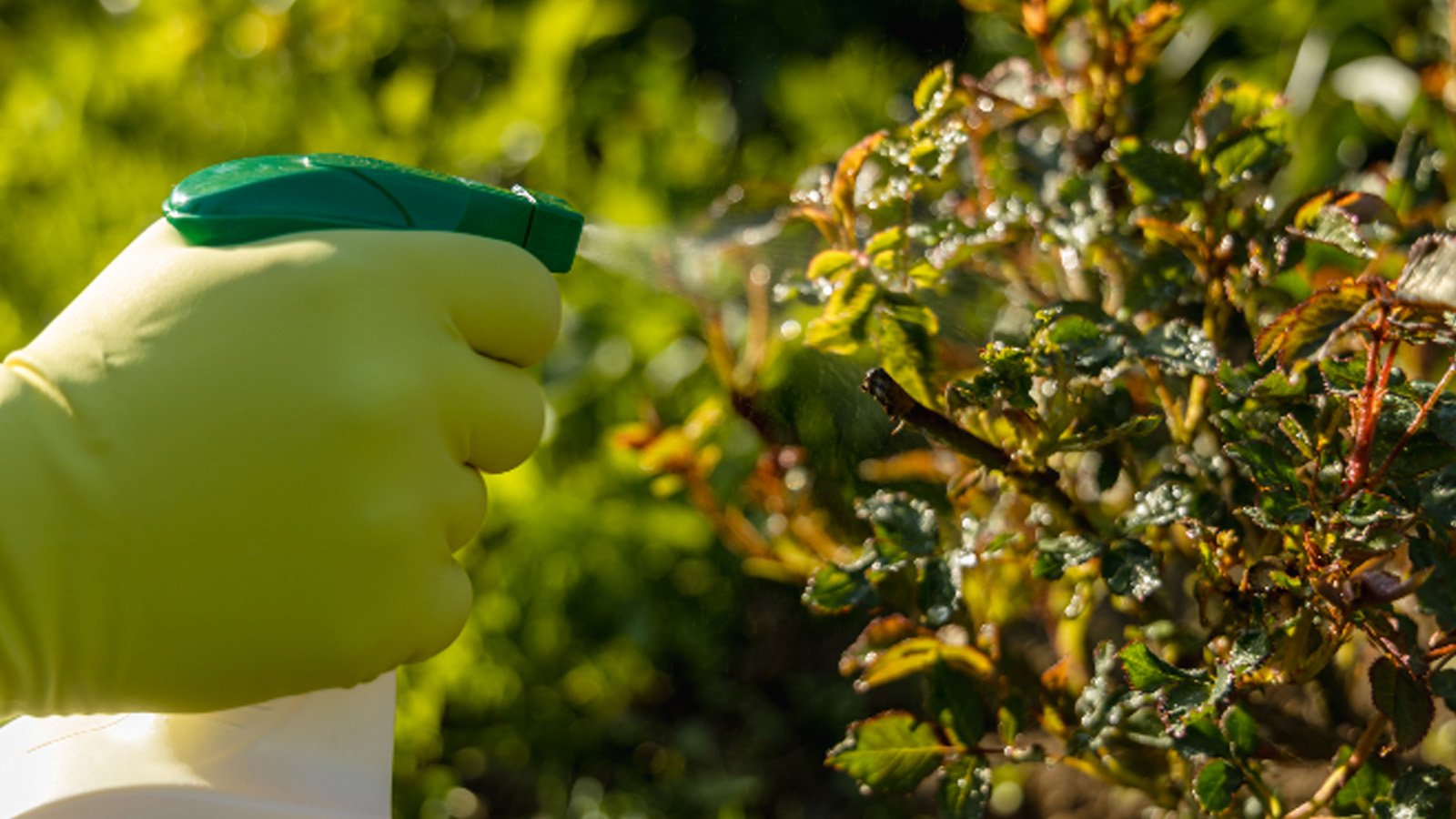Spinosad powder has become a go-to tool for growers, turf managers and integrated pest management (IPM) practitioners who want a powerful yet comparatively “natural” insect control option. Derived from the fermentation metabolites of the soil actinomycete Saccharopolyspora spinosa, spinosad is marketed widely as an effective insecticide for foliage, fruit, greenhouse crops, stored-product protection and even some mosquito programs.
Quick summary: Spinosad Benefits
Broad usefulness: Spinosad controls many chewing and biting pests (caterpillars, thrips, leafminers, fruit flies, some beetles), and is also used for stored-product protection.
Natural origin, microbial fermentation: It’s a fermentation product (mixture of spinosyn A and D) rather than a synthetic organophosphate or pyrethroid.
Favorable safety profile: EPA classifies spinosad as a reduced-risk insecticide with low mammalian toxicity when used per label, but it is toxic to some aquatic invertebrates and beneficial insects (notably bees at certain exposure times).
IRAC mode of action: It is a spinosyn (IRAC Group 5) acting as a nicotinic acetylcholine receptor allosteric modulator — a novel mode that reduces cross-resistance with many older chemistries.
These points form the backbone of why spinosad is popular in modern pest management: effective, microbially derived, and—when used correctly—compatible with IPM and organic standards.
How Does It Work?
Spinosad is a mixture of biologically active spinosyns (mainly spinosyn A and D). It controls insects both by contact and ingestion. At the biochemical level, spinosyns act on insect nervous systems — specifically at nicotinic acetylcholine receptors — causing hyperexcitation, paralysis and death. Because this target and binding profile differ from most older pesticides, spinosad often remains active against populations resistant to organophosphates, carbamates or pyrethroids. IRAC classifies it under Group 5 (nicotinic receptor modulators).
Practical implication: growers often rotate spinosad with other classes to manage resistance and preserve efficacy. Recent reviews emphasize that effective resistance management — alternating modes of action and integrating non-chemical controls — prolongs spinosad’s usefulness.
Primary agricultural and horticultural uses
1. Vegetables, fruit and ornamentals
Spinosad is widely registered for use on many vegetable and fruit crops to control caterpillars (e.g., cabbage loopers, armyworms), thrips, leafminers and certain beetles. It’s valued for quick knockdown and residual activity on foliage, making it suitable for both conventional and organic growers.
2. Greenhouse and protected culture
Greenhouses benefit from spinosad’s ingestion/contact action on pests like thrips and leafminers, and its compatibility with beneficial insect programs when applied thoughtfully (timing and method matter). OMRI-listed formulations exist specifically for organic greenhouse production.
3. Turf and ornamentals, landscape use
Spinosad controls lawn pests (sod webworm, armyworms) and ornamentals pests with lower mammalian toxicity than many synthetics, making it useful for public spaces, parks and golf courses when applied per label.
4. Stored product protection and post-harvest
Research and industry papers report spinosad’s effectiveness against several stored-product beetles and moths, offering an alternative for grain protection that fits IPM programs.
5. Mosquito and public health programs (targeted use)
Emerging work explores spinosad for mosquito control in specific settings; its novel mode of action and microbial origin make it attractive where non-residual, targeted larvicides are appropriate. Regulatory approvals vary by jurisdiction.
Soil and environmental impacts — what to expect
It is produced by a soil microorganism and degrades in the environment via photolysis and microbial processes. Field and lab studies indicate relatively low persistence in soil under normal conditions, but degradation rates vary with sunlight, temperature and microbial activity. The environmental record is generally favorable, which is why regulatory agencies have labeled it a reduced-risk option. That said, careful stewardship is essential because spinosad can be harmful to aquatic invertebrates and is toxic to bees if sprayed directly on flowering plants or when residues are fresh. Buffer zones and application timing (evening sprays, avoid bloom) reduce non-target exposure.
Human and mammalian toxicity — the safety picture
Authoritative reviews (EPA, NPIC) find spinosad to have low acute mammalian toxicity and to be “not likely” carcinogenic based on long-term animal studies. Skin or eye irritation is possible on direct contact with concentrated formulations or powders, so standard PPE and handling protocols are required in manufacturing and mixing. The biggest safety concerns in the field are ecological (bees, aquatic arthropods), not chronic human toxicity at labeled rates.
Resistance and Stewardship — Important Caveats
No insecticide is immune to resistance pressure. Although spinosad’s mode of action is distinct, resistance has developed in certain pests where spinosyns were used repeatedly without rotation. To extend product life:
Rotate spinosad with other IRAC groups.
Use threshold-based spraying (treat when pest levels exceed economic thresholds).
Integrate biological controls (predators, parasitoids) and cultural tactics (crop rotation, sanitation).
Avoid sub-lethal rates that promote selection for resistance.
Practical handling and formulation notes for manufacturers and formulators
Formulation forms
Spinosad powder is used to produce suspension concentrates (SC), wettable powders (WP), emulsifiable concentrates (EC) and dusts. For many end uses, liquid SC formulations are preferred because they disperse quickly and reduce inhalation risk during mixing. OMRI-listed liquid and granular products are common for organic markets.
Compatibility and tank mixing
Spinosad mixes well with many adjuvants and fungicides but should be tested for physical compatibility before tank mixing. pH extremes and certain oxidizers can reduce efficacy. Always follow label guidance and conduct jar tests for new tank-mix partners.
Storage and stability
Keep the powder or concentrate sealed in a cool, dry place. We always keep this powder in paper drum or aluminum foil bags. High humidity and heat can reduce shelf life; packaging should be moisture-resistant. XI AN CHEN LANG BIO TECH provides COA, stability and safety data with each batch.
Best-practice usage tips for growers (quick checklist)
Apply at times when pollinators are least active (dusk/dawn) and avoid spraying flowering crops.
Use label concentrations and avoid tank-mixing without compatibility tests.
Integrate with IPM: scouting, thresholds, beneficials.
Rotate active ingredients to prevent resistance build-up.
Observe preharvest intervals (PHIs) and re-entry intervals (REIs) specified on product labels.
Is spinosad “natural”? — regulatory and organic context
Spinosad’s origin (microbial fermentation) and OMRI listings for some formulations allow many organic producers to use it. However, being “natural” does not mean risk-free: best practices, label compliance and environmental safeguards still apply. Many buyers appreciate spinosad because it provides an effective, IPM-compatible option that fits organic standards when registered as such.
Why Choose CHEN LANG BIO TECH As Your Spinosad Powder Supplier?
As a spinosad powder manufacturer, we recognize that quality, traceability and technical support are as important as efficacy. Here’s what sets our supply apart:
High-purity spinosad powder produced under GMP and ISO standards, with consistent assay of spinosyn A/D ratios for predictable field performance.
Full documentation: COA, MSDS, TDS, stability and application guidance included with every shipment.
Flexible MOQ and packaging: from R&D samples to bulk drums with moisture-resistant liners and secure export packaging.
Technical support & formulation guidance: our R&D team helps customers convert powder into SC, WP or other formulations, and offers jar-test compatibility services.
Sustainability & traceability: fermentation records, batch traceability, and responsible waste management practices.
Fast global logistics: experienced export team, export-ready documentation, and regular stock levels to meet seasonal demand.
These capabilities help brands accelerate product development, ensure consistent on-farm results, and meet regulatory expectations across markets.
Common FAQs
Q: Can spinosad be used on edible crops?
A: Yes — many spinosad formulations are registered for use on vegetables, fruits and nuts. Always follow label PHI and application rates.
Q: Is spinosad safe for beneficial insects?
A: It is less toxic to many beneficials than broad-spectrum synthetics, but direct spray can harm bees and some predators. Use targeted applications and avoid bloom.
Q: Does spinosad persist in soil?
A: No, it typically degrades through photolysis and microbial action; persistence is relatively short under typical field conditions, but exact half-life varies by environment.
Q: Is it OMRI-approved?
A: Several commercial spinosad products are OMRI-listed for organic production; check the formulation and label for organic certification.
Where Spinosad Fits in Your Program
Spinosad powder is a proven, microbially derived insecticide that belongs in the toolbox of modern IPM and organic growers. It is especially good for chewing pests, leafminers and other difficult larvae, and it offers a reduced-risk profile compared with many synthetic chemistries. That advantage, however, comes with responsibilities: stewardship, correct timing, avoidance of pollinator exposure and resistance management are essential to maintain efficacy long term.
When sourcing, choose a honest manufacturer CHEN LANG BIO TECH who provides high-purity powder, full technical dossiers and formulation support—so your formulations perform reliably and safely in the field. Please contact us email: extract@chenlangbio.com if you want more information about spinosad.



